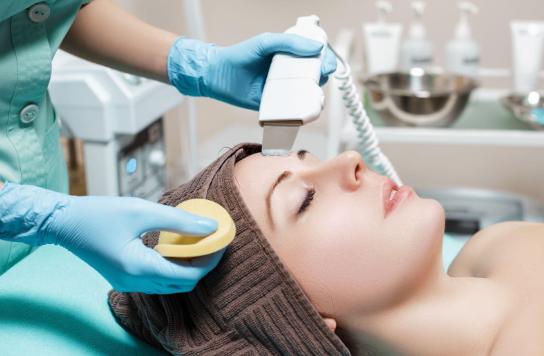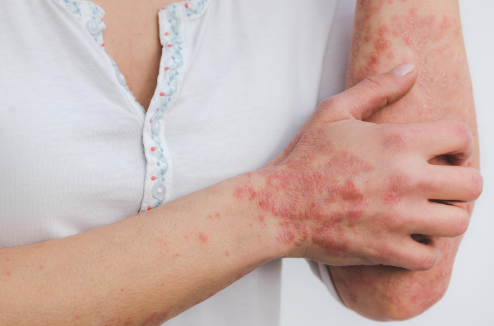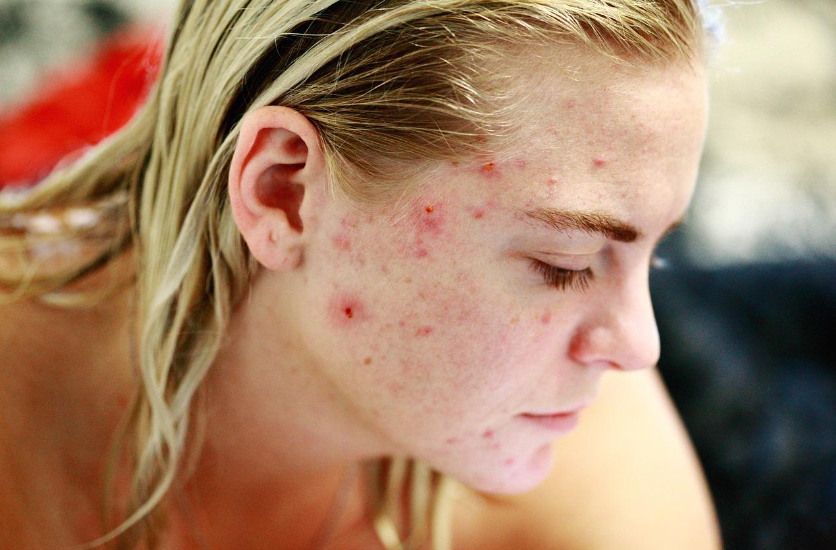Everything You Need to Know about Dermatosis Papulosa Nigra

Dermatosis Papulosa Nigra (DPN) is a non-serious skin condition where small, black or brown colored growths appear on your face, neck, and upper torso. These growths are harmless and quite common among adults with skin of color. However, if these spots cause frequent irritation or itchiness, or you don’t like the look of them, you can undergo treatment to have them removed.
Keep reading to know more about Dermatosis Papulosa Nigra and its causes and treatments.
What Is Dermatosis Papulosa Nigra (DPN)?
Dermatosis Papulosa Nigra (DPN) is a skin condition where small, dark, or skin-colored bumps appear on your face, neck, and upper torso. Some people with Dermatosis Papulosa Nigra only develop a few isolated spots on their skin, while others have spots covering large patches of skin.
What Does DPN Look Like?
The bumps caused by DPN are usually black or brown and can be mistaken for moles. These spots are smooth and round, and some of them typically lie flat against your skin, while others may hang off the skin. The small flaps of skin attached to them are called peduncles. They range from 1-5 millimeters in diameter and 1-3 millimeters in height.
Is Dermatosis Papulosa Nigra Harmful?
DPN is a harmless skin condition, and it doesn’t cause any scaling, ulcerations, or crusting. The existence of these spots is not a cause for medical concern. However, they can cause itchiness and irritation and be a sore, unflattering sight. Most people choose to treat their Dermatosis Papulosa Nigra for these reasons.
When Does Dermatosis Papulosa Nigra Form?
These spots usually start appearing during adolescence as freckle-like bumps. They are smooth in the beginning and gradually grow rougher with time. As you grow older, the bumps might increase in size and number.
Who Does Dermatosis Papulosa Nigra Affect?
DPN tends to more commonly occur in people with skin of color or in people who fit into the Fitzpatrick skin phototypes III to VI. It primarily affects people with dark skin, including Africans, dark-skinned Asians, and Polynesians.
Up to 35% of the Black-Americans are afflicted with Dermatosis Papulosa Nigra. However, it has a lower frequency of occurrence among African-Americans with a fairer complexion. Women are more likely to be affected by this condition than men.
DPN and Seborrheic Keratoses
Dermatosis Papulosa Nigra is considered to be a common variant of seborrheic keratoses (SKs).
Seborrheic keratoses are noncancerous skin growths that are usually brown, black, or light tan. As you grow older, they appear gradually on your back, neck, shoulders, chest, and face. These lesions look scaly or waxy and are usually raised from your skin. Since they’re not cosmetically appealing and can cause skin irritations, some people decide to have them removed using various treatments.
While seborrheic keratoses aren't cancerous or contagious, it’s advisable to consult with your doctor about them. The root cause for this condition is unclear, but it can likely be inherited. And if you have one seborrheic keratosis, you might develop others in the future. So to ensure your long-term health and well-being, it’s wise to talk to your doctor about these skin growths.
What Causes Dermatosis Papulosa Nigra?
Healthcare professionals do not know the exact cause of Dermatosis Papulosa Nigra.
However, many believe that there is a connection between DPN development and UV exposure. This theory is supported by the fact that most of the DPN bumps appear on an individual’s head, neck, and upper torso, which are the body parts most exposed to sunlight. People who live in sun-exposed regions of the world are also more likely to develop DPN than people who live in cooler climates.
Dermatosis Papulosa Nigra could also be genetically inherited. 40% to 50% of patients with DPN have family members who have also been afflicted with it. The use of skin lightening creams can also cause DPN. This is because skin lightening creams lead to a loss of protective skin pigment, which in turn reduces UV protection.
How is Dermatosis Papulosa Nigra Diagnosed?
Dermatosis Papulosa Nigra can be clinically diagnosed. Dermatologists can easily recognize the skin condition based on the appearance and distribution of the spots.
Apart from that, a dermoscopy can be used to distinguish it from other pigmented lesions on your skin. Dermoscopy is a cost-effective and non-invasive treatment to help find DPN spots. In 59% of DPN cases, the growths appear as fissures in a cerebriform (brain-like) pattern.
If your doctor suspects that a particular skin growth could be cancerous, they would perform a skin biopsy. For this procedure, a small skin sample is collected from the affected area and studied under a microscope to confirm the diagnosis. However, dermatologists rarely need to perform a biopsy to diagnose DPN.
How Is Dermatosis Papulosa Nigra Treated?
Dermatosis Papulosa Nigra isn’t a dangerous skin condition and so doesn’t require treatment. But the condition can worsen with age and as the number and size of spots begin to grow, it can be difficult to manage them. So some patients prefer to have the bumps removed, especially when they become too itchy. Some others choose to remove them because they don’t like their look.
There are two broad categories of treatment for DPN—surgery and laser treatments. Both types of treatments have varying degrees of success. Before undergoing treatment, talk to a trusted healthcare professional about a treatment option that is best suited to you. Carefully consider the expectations and outcomes of the treatment before making your choice.
Surgical Removal
Some cases of DPN can be removed surgically. They are performed by applying topical anesthesia over the affected area. Some surgical treatment options to remove DPN are:
- Cryotherapy: This treatment uses liquid nitrogen to freeze off the bumps. Cryotherapy is the most efficient and affordable surgical treatment option available.
- Curettage: In this procedure, your bumps are scraped off your skin using a small, scooping surgical instrument.
- Electrocautery: This involves burning away the bumps using a small probe with an electric current.
Laser Treatments
Several types of laser therapies can be used to remove DPN growths. These therapies use different frequencies and levels of light to effectively remove bumps on your skin. Here are some laser treatment options for you to consider:
- Carbon-dioxide Laser: According to a 2016 study, carbon-dioxide laser therapy is a safe and effective option to remove DPN growths. It also has a low chance of recurrence.
- KTP Laser: This method of treatment uses a potassium titanyl phosphate (KTP) crystal along with an Nd:YAG laser.
- PDL Laser: The pulse dye laser is also a safe and effective treatment to remove DPN growths. However, to ensure optimal results, you will have to undergo multiple sessions of therapy.
Which Treatment Option to Choose?
While you’re considering treatment options it’s important to remember that you’re at a higher risk of developing pigmentation defects and scarring following the treatment. Your skin may look scarred and blotchy after treatment and can be just as aesthetically undesirable as DPN growths. So talk to your doctor and pick a treatment option that will result in the least scarring.
Since most DPN treatments are performed for cosmetic reasons, they aren’t covered by your insurance plan. This means that they’re an out-of-pocket medical expense that you need to bear. The cost of the treatment will also vary depending on the size of the affected areas and the type of treatment. Choose a treatment plan that will ensure effective results while fitting into your budget.
Sometimes, your doctor might prefer to treat different cases with different treatments. They might resort to one type of treatment for a patient with many growths and another type of treatment for someone with very few spots. So depending on the scale of your treatment, your doctor might recommend a particular type of treatment.
Discuss your options with a qualified healthcare professional and make an informed decision that is beneficial for your long-term health.
When to See a Doctor
Dermatosis Papulosa Nigra is a noncancerous growth on your skin. However, if you’re unsure about whether a lesion is a DPN growth, consult a dermatologist. DPN growths do not usually cause any pain or discomfort. However, they can grow irritated and itchy if they’re constantly rubbing against harsh clothing. In such cases too, it is advisable to consult your doctor to learn the best course of action going forward.
If you’ve been considering having your lesions removed for cosmetic reasons, talk to a dermatologist about the treatment options best suited to you.
If you’re looking for an expert healthcare provider to help remove your DPN growths, get in touch with us at Pine Belt Dermatology, MS. Our team of specialists is dedicated to offering the best dermatology and cosmetic services to fulfill all your needs. We will run you through the benefits and drawbacks of every available treatment option and help you discover the treatment best suited to your goals. To contact us, check out our locations, or request an appointment today!



Petal Office
Phone:
Fax:
601-336-7826
Address:
Hours of Operation:
Mon-Fri: 8:00am to 4:30pm
Hattiesburg Office
Phone:
Fax:
601-475-9969
Address:
Hours of Operation:
Mon-Fri: 8:00am to 4:30pm
Ellisville Office
Biloxi Office
Phone:
Fax:
228-232-0874
Address:
1009 Tommy Munro Drive, Suite A
Hours of Operation:
Mon-Fri: 8:00am to 4:30pm
Ocean Springs Office
All Rights Reserved | Pine Belt Dermatology








